“Could you tell me,” they ask, “how to get to the Kennedy Memorial Bridge?” Five years and a day after Sen. Edward M. Kennedy’s black Oldsmobile lurched off the Dyke Bridge on Chappaquiddick, the senior Massachusetts senator at the wheel and the doomed Miss Mary Jo Kopechne beside him, tourists keep coming, at least 60 of them a day, to stand and stare at the scene of the Island’s - perhaps the nation’s - most celebrated automobile accident.
What brings them? “A morbid infatuation with seeing the Dyke Bridge,” says a Boston real estate broker, impels 70 per cent of his prospects to go and see. Jack Duncan, a visitor to the Island this week, had come all the way from North Carolina especially to take pictures of the bridge. Chappaquiddick residents resent the traffic of “tourists with perverse curiosity” and the long waiting lines it creates at the Chappy side of the ferry run between the Island’s island and Edgartown. “The greatest tragedy for Chappaquiddick short of an earthquake,” says Mrs. Robert Marshall, who lives there.
What do they see? Just about what Mr. Kennedy saw - too late - a little before midnight July 18, 1969: a rough dirt road leading down to the edge of Pocha Pond and, at a slight angle to its alignment, a narrow wooden bridge, slightly arched, passing over the pond’s outlet to the sea and thence to pathways running out to the East Beach ocean front.
Chappaquiddick people say tourists pretend to be out birdwatching or scouting for a place to sun and swim but gravitate to the bridge and, some of them, stoop to pick up souvenir pebbles or even whittle a bit of wood from the planking. Jerry Grant, who runs the ferry, says at least five per cent of his 1,200 passengers a day ask for directions to the bridge.
Most Islanders interviewed this anniversary week said they cannot believe Mr. Kennedy’s account of the accident. He and Miss Kopechne left a cookout gathering of former aides to Robert Kennedy at about 11:15 p.m., meaning to return to Edgartown; instead of making a left turn on the island’s only hardtop road, he turned right onto the unpaved road; he failed to allow for the angle of the bridge to the road when it came into his headlights; and suddenly he was struggling in deep water. This is his story. After extricating himself and attempting to dive for Miss Kopechne in the streaming current, he went back to the scene of the party, more than a mile, and with two friends returned to attempt rescue again.
Failing, they returned to the ferry landing, where Mr. Kennedy dove into the Edgartown harbor channel and swam back to Edgartown and his hotel.
He did not report the incident to then Police Chief Dominick J. Arena until 10 hours later. He pleaded guilty to leaving to the scene of an accident and was given a suspended two-month jail sentence.
“I think he lied, and I have no use for liars,” says Charles Cook of North Tisbury. “Kennedy was lying through his teeth,” Sherman Hoar of Edgartown told an interviewer, “because he couldn’t have made that bad turn unless he was skunked out of his mind.” “You can’t live on Chappaquiddick and think anything else,” said Mary Penhune. Any public-opinion sampling on the Island is apt to reflect its traditional Republican complexion - President Nixon ran up majorities here in the only state he lost in 1972. Islanders who didn’t want to be quoted used such terms as “fink” and “common criminal.” A liar and a coward, said Mrs. Lucy abbot of West Tisbury.
There is a thread of dissent from the general condemnation. “The man was on his own time,” said Alder Fournier, and Mrs. Charles Evans said, “Mr. Kennedy has shown great courage and integrity after the incident.” Some Islanders say the stimulus to tourism growing out of the accident has been good for business, and still others say his record in the Senate, especially with respect to conservation legislation, should be considered in shaping any verdict.
Not everyone cares. Many Vineyarders said they haven’t given the incident a thought in five years. “Haven’t even been to Edgartown or Chappaquiddick in 14 years,” said an elderly up-Island citizen, and that was that. In Oak Bluffs lives a man who confessed he’d never heard of Senator Kennedy or the bridge at Chappaquiddick.
But Chappaquiddick and the questions it raised are an issue now, five years and a day after a black automobile rolled off the Dyke Bridge, and they will be in the seventh year, 1976, when the nation will choose its president.




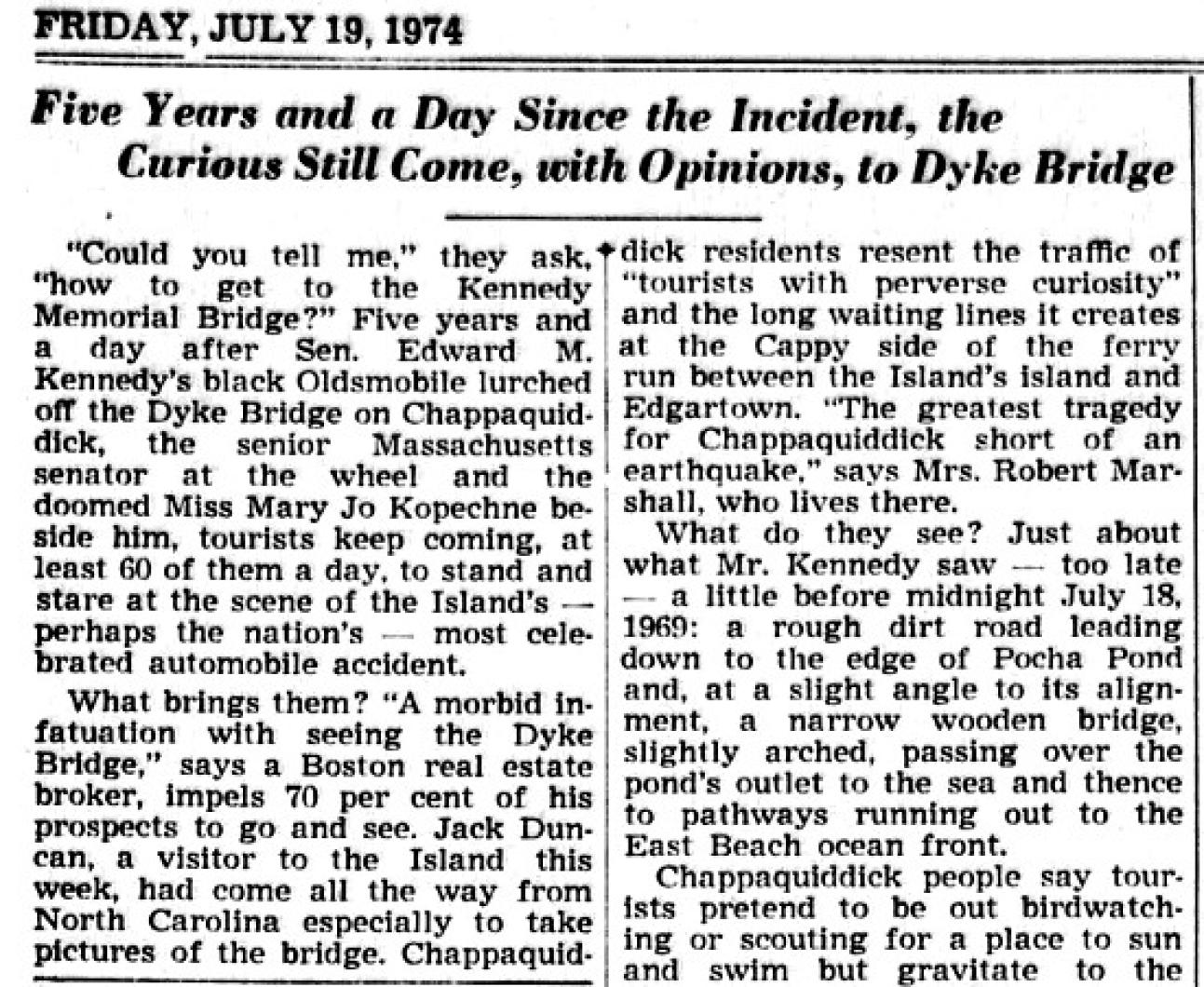
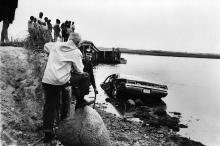
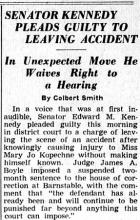
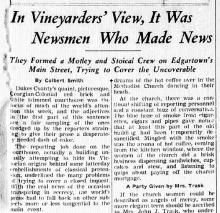
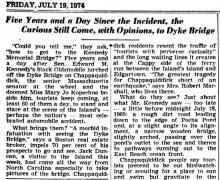
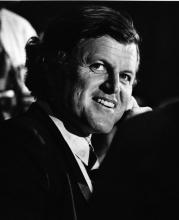
Comments